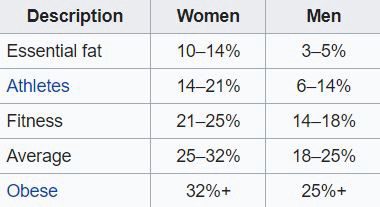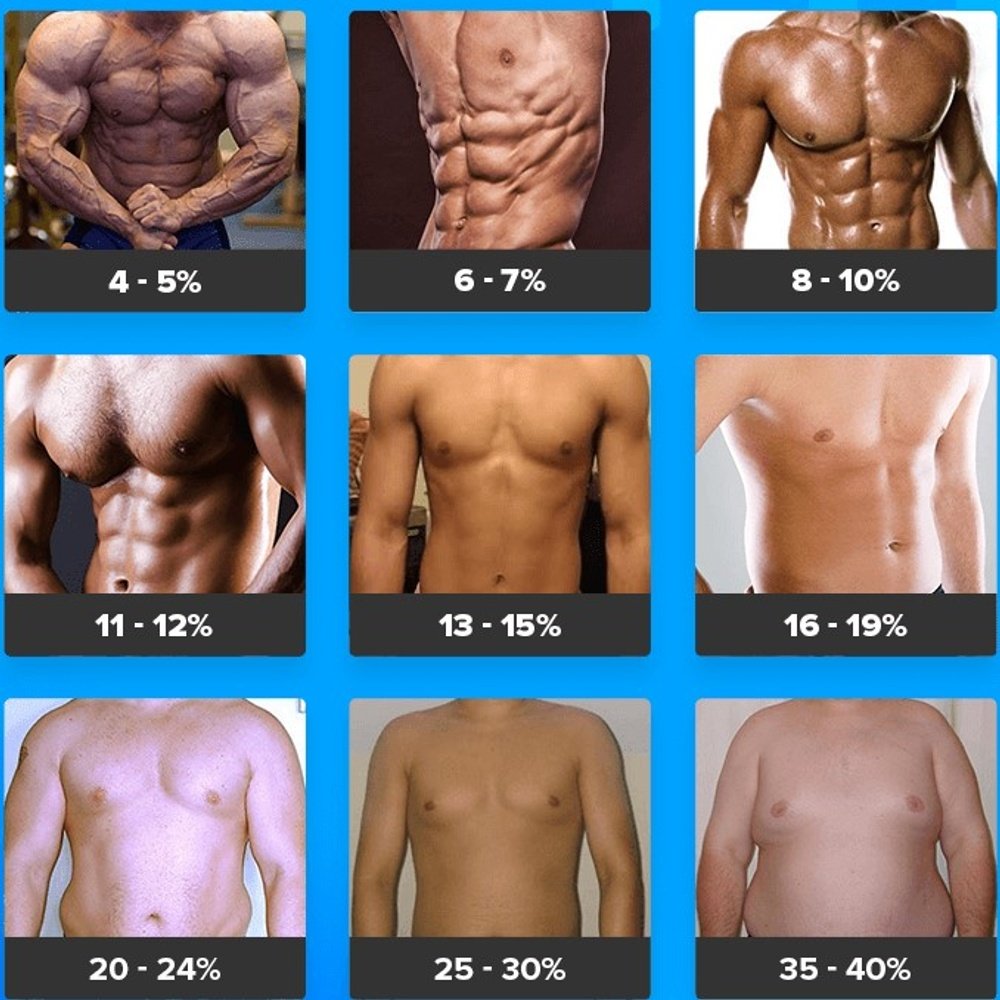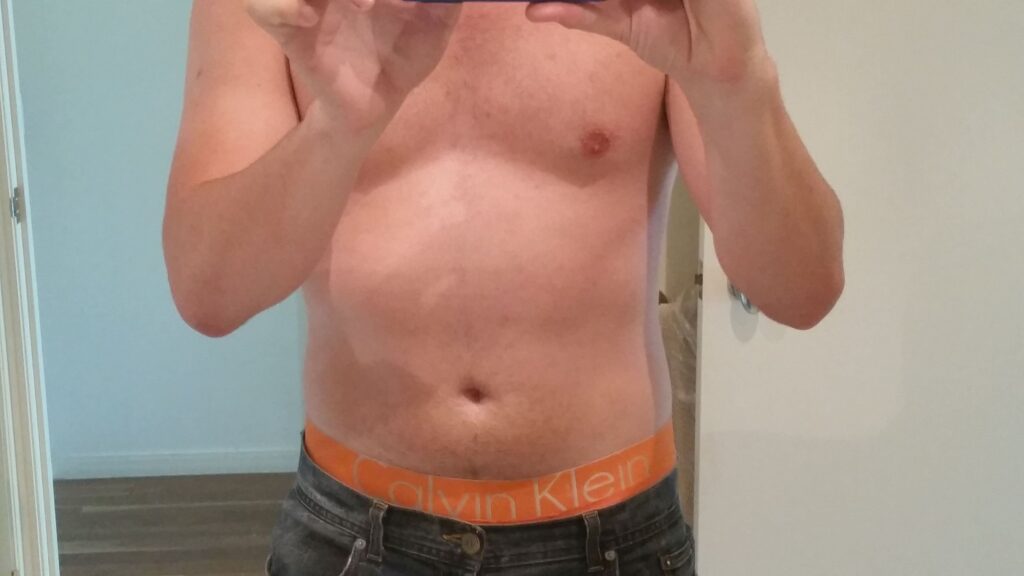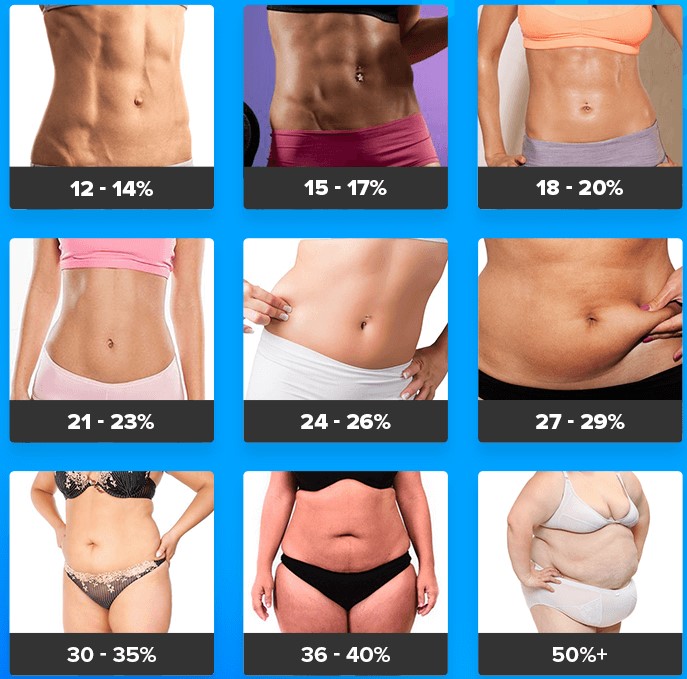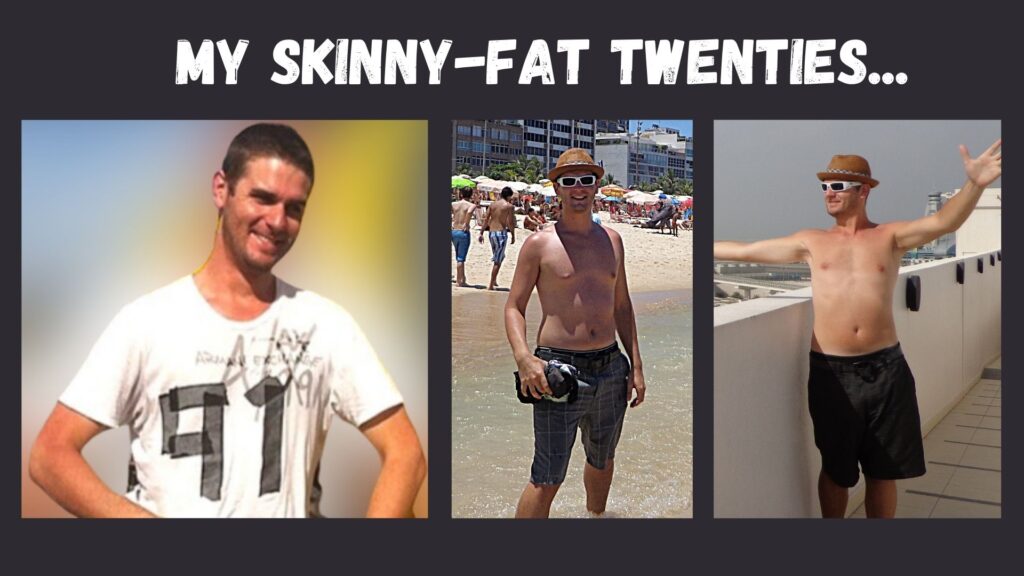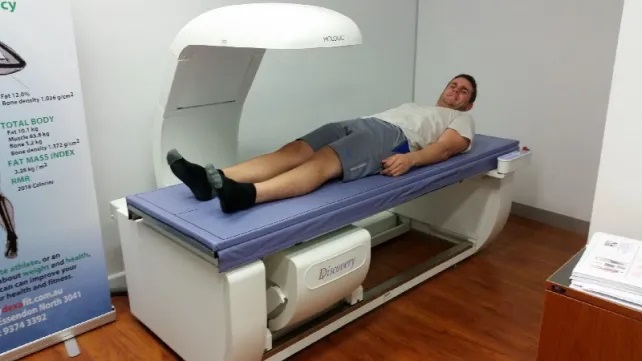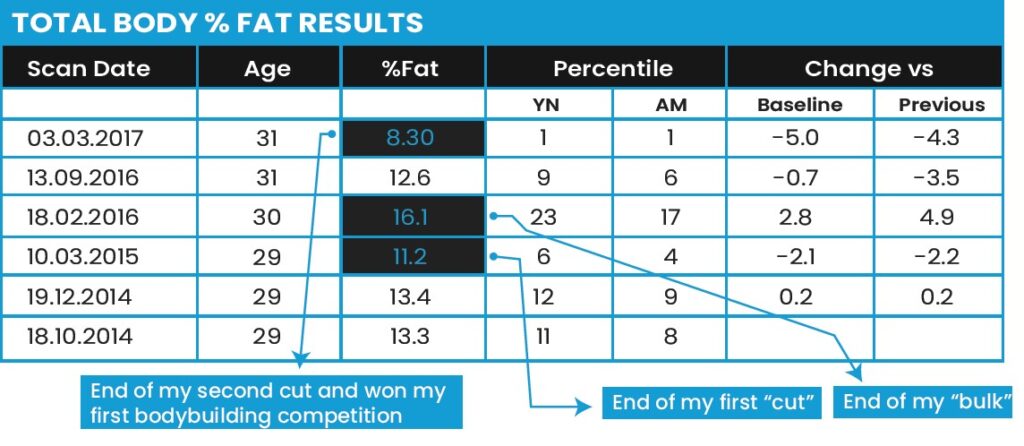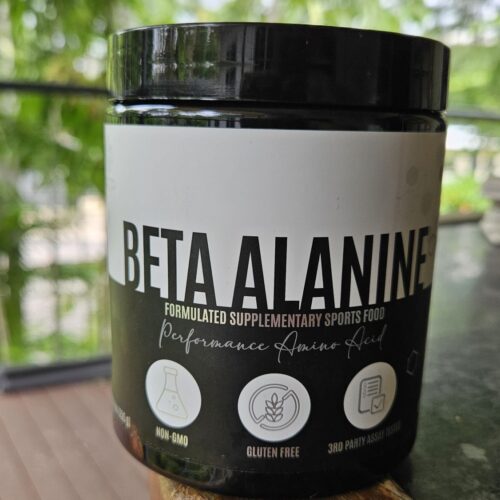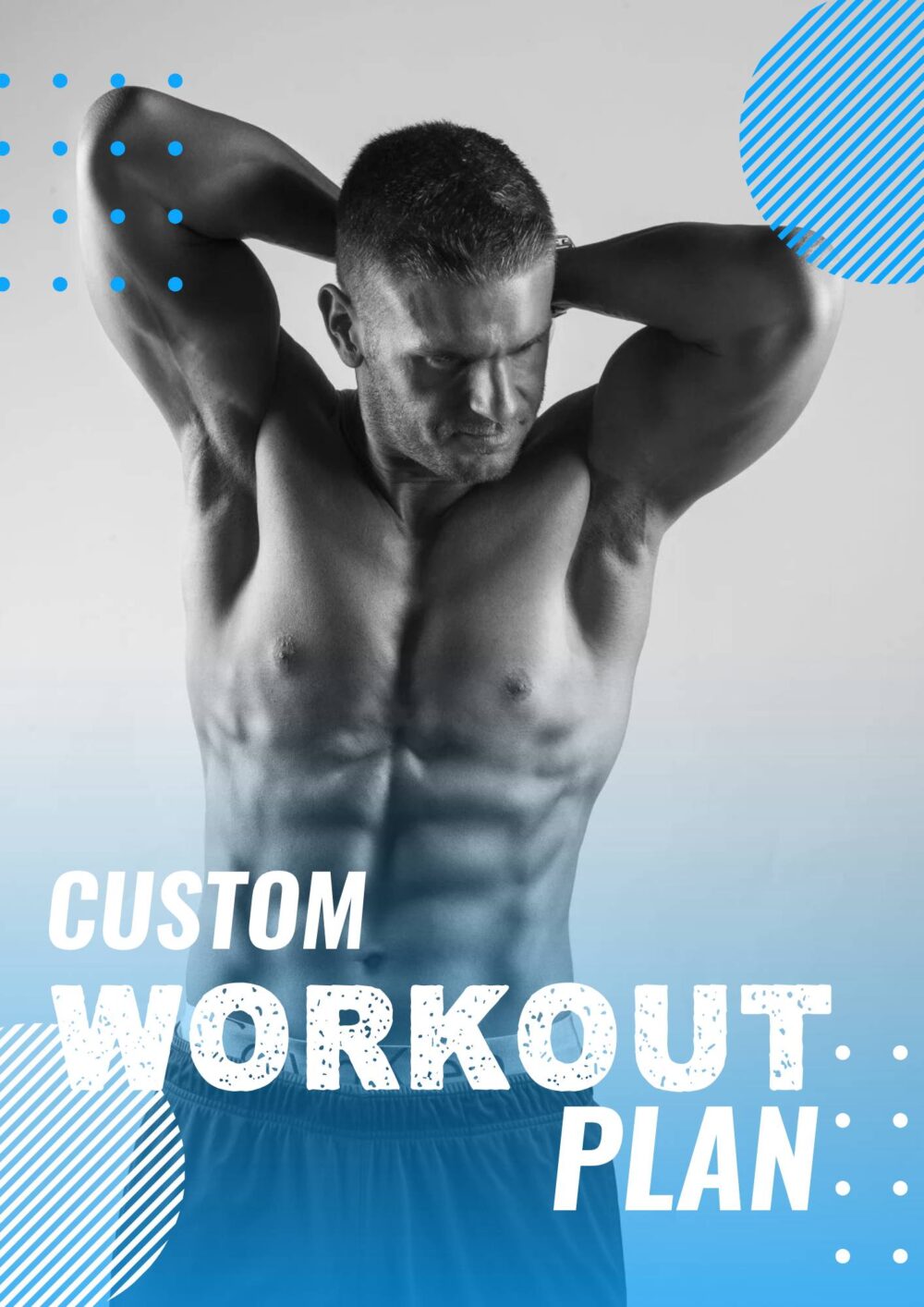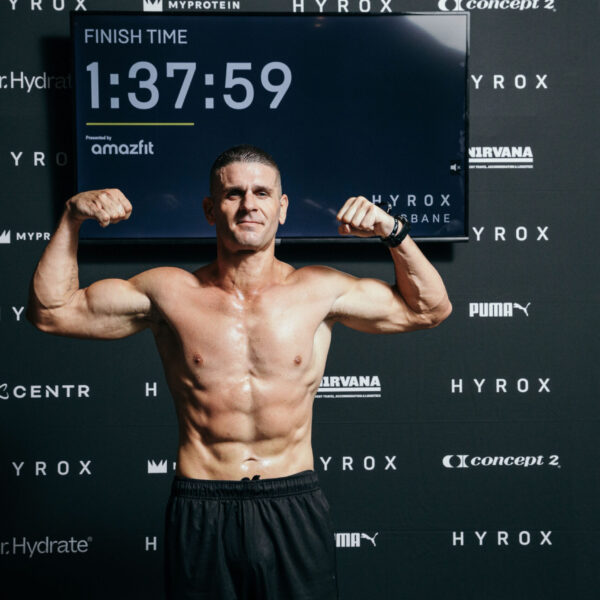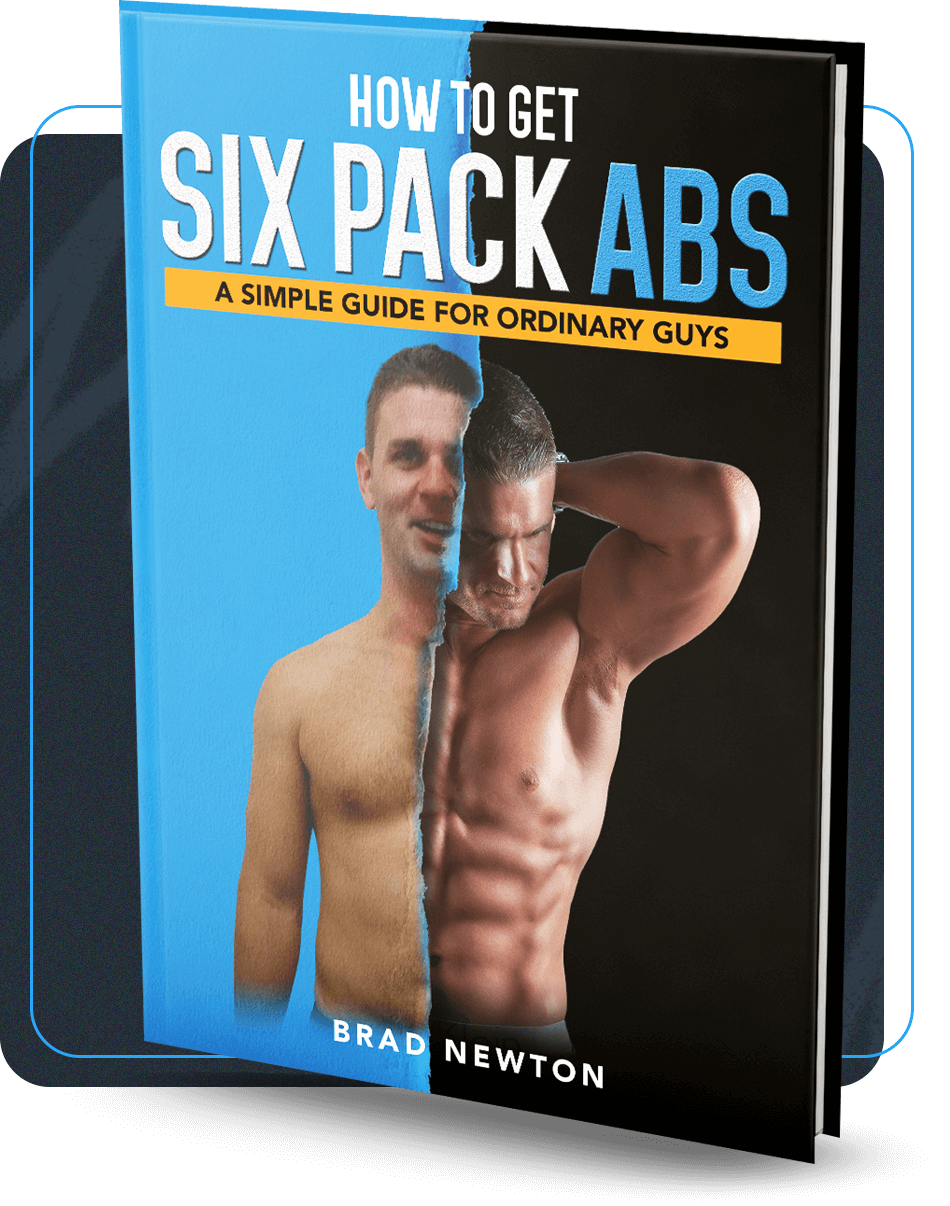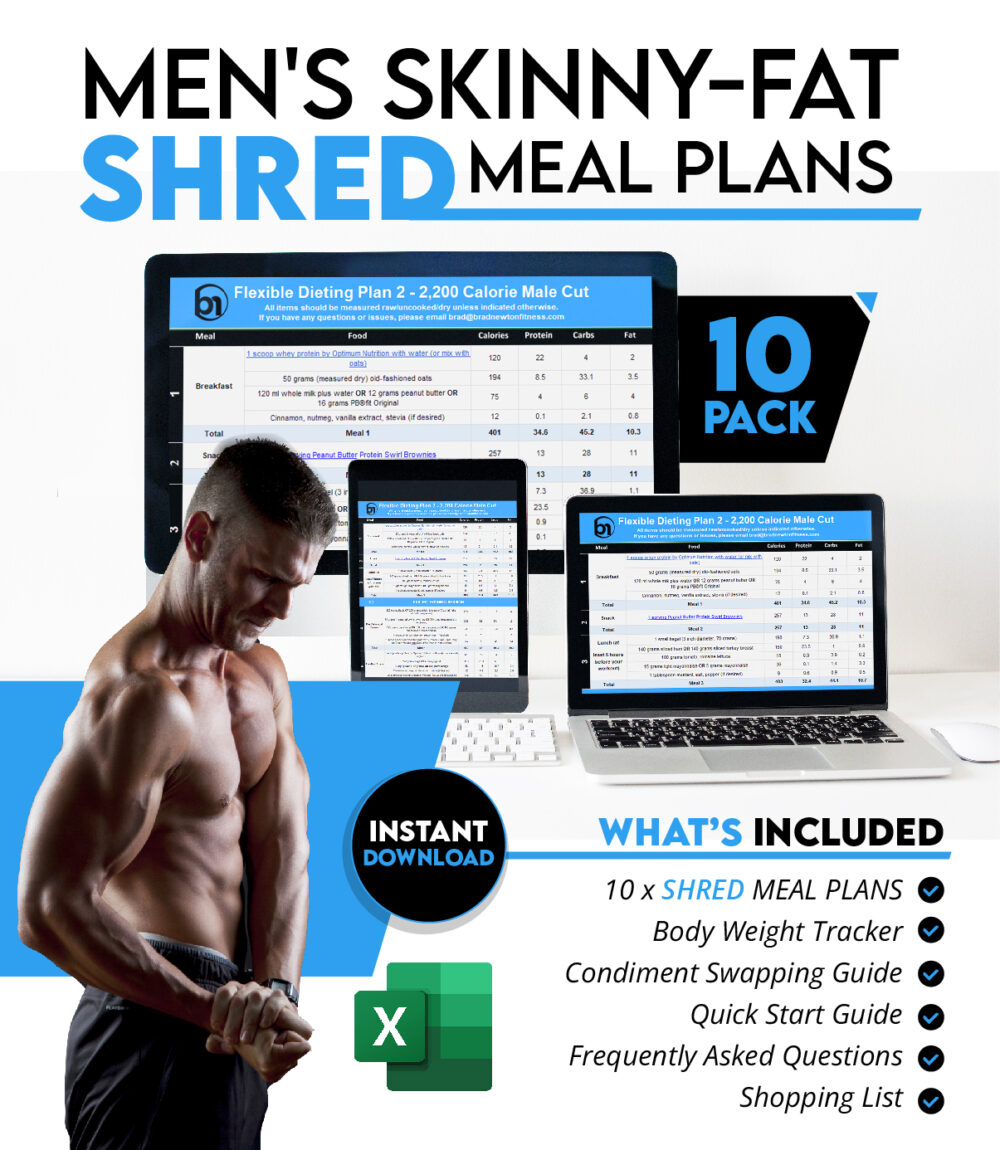If you are an absolute beginner wanting to lose fat, knowing how to calculate your own body fat percentage is vital for tracking your progress and setting realistic fat loss goals. In this article, I will show you how.
Using the strategies to track body fat percentage that I am about to share with you; in addition to implementing push-pull-legs training, tracking my macros and meal planning, transformed my ordinary physique into one where I competed and won numerous natural bodybuilding competitions.
Related: Still stuck in the skinny-fat trap? You train hard, eat “healthy,” but still look soft instead of strong—sound familiar? Stop spinning your wheels. I’ll show you exactly how to build muscle, drop fat, and finally get the lean, athletic physique you’ve been chasing 👉 Click here to apply for online coaching today!
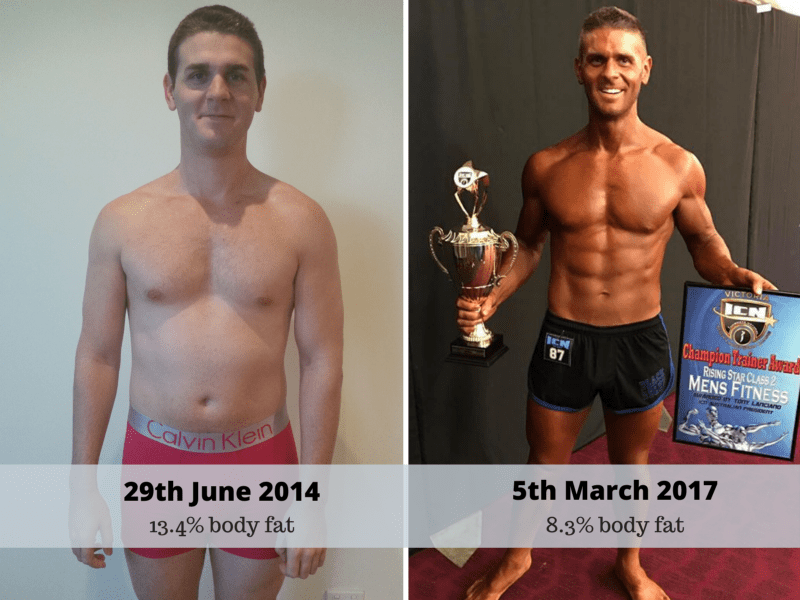
By the end of this article, you’ll learn how to use simple charts to track your body fat percentage, the most accurate body fat percentage measurement devices, and setting realistic body fat percentage goals that are achievable and sustainable.
Firstly, let’s just cover off the basics:
What is Body Fat Percentage?
Body fat is the greasy stuff that everyone is carrying around which a $100 billion per year fitness industry is built around selling you (mostly) useless products and services to try and help you shred it.
Your body fat percentage is the percentage of your body weight that’s fat. If we remove your organs, bones, tendons, water, etc, then all that is left over is body fat.
For example, if you’ve never been to the gym in your life and you weigh-in at around 220 pounds and have around 50 pounds of fat, your body fat percentage will be around (50/220) 23%.
If you weigh-in at around 200 pounds with 30 pounds of fat, then you’ll be around 15% body fat.
As you can see, your body fat percentage is the percentage of your body weight that’s fat, which will fluctuate as your body composition changes.
I’ll show you what your body fat percentage should be depending on the fitness goals you are trying to achieve.
What Should My Body Fat Percentage Goal Be?
Before we can look at setting body fat percentage goals, it’s important to look at body fat percentage ranges for men and women of varying levels of fitness.
As you can see from the table above from the American Council on Exercise, you should never try to achieve a body fat percentage less than 10% for women and 3% for men as you run the risk of a heart attack or coma.
I’m certain that you can totally appreciate the importance of “essential fat” and its role in protecting your internal organs, etc. It is considered the minimum amount of fat required for survival.
When I was competing as an amateur bodybuilder, my body fat percentage levels were around 8–9% for approximately a week before and several days after the competition. Post-competition, also known as the “off season”, my body fat percentage would hover around 11–14% (see below).
Unfortunately, most competitors do not show their off season look because it doesn’t sell the product they try and peddle during their on-season. According to them, it doesn’t “look good” for their brand image (which I disagree with!)
It is common in the bodybuilding world to allow your body fat percentage to swing between extremes for the on-season and off-season. Allowing body fat percentage to drop into the “essential fat” category (or close to) for the day of the competition, before bingeing on donuts and pizzas immediately post-show to get the body fat percentage levels back into the “athletes” range for the rest of the year.
If you are interested in a six pack and looking good, guys will need to get their body fat percentage down to around 10–14% and for women, around 15–19%. For almost everyone, these body fat percentage levels are sustainable all year around. For women, anything below 15% could mean irregular menstrual cycles.
Related: Still stuck in the skinny-fat trap? You train hard, eat “healthy,” but still look soft instead of strong—sound familiar? Stop spinning your wheels. I’ll show you exactly how to build muscle, drop fat, and finally get the lean, athletic physique you’ve been chasing 👉 Click here to apply for online coaching today!
The Best Way to Measure Body Fat Percentage
There are several ways you can do this which come with varying levels of accuracy and cost. Most of the time, I use a simple caliper (which I will discuss shortly) and I usually read within 1–2% body fat accuracy of a DEXA scan (considered the “gold standard” of measurements).
In this section, I’m only going to cover three methods you can use to measure and track your body fat percentage.
Firstly, let’s take a look at the cheapest method (it’s free!) which anyone can do right now by using a body fat percentage chart.
Using Body Fat Percentage Charts
When I started my fitness journey, I stumbled across the following reference chart that helped me estimate my body fat percentage by simply comparing my body against the chart below.
When I started my fitness journey in 2014, the photos I was taking matched the physique marked in the chart above. I was around 19–21% body fat.
As much as I was disappointed with what I saw in the mirror, I was equally determined to get shredded once and for all. When I looked at the chart, my aim was to look similar to the guy at around 10–12% body fat.
I encourage you to look yourself in the mirror and determine your current approximate body fat percentage then look at what you’d like to achieve and set yourself a goal.
If you are a woman reading this, you will use a chart below.
Keep in mind that if you have similar levels of muscle to the people in the chart then you’ll look similar at certain body fat percentages.
Otherwise people of the similar body fat percentage can look very different with varying levels of muscle.
Here is an example of when I was skinny-fat back in 2013 where both my body fat and muscle levels were low. When I added some muscle to my frame over the years, despite my body fat percentage barely moving a few notches, my physique looked completely different.
So if you are skinny-fat, the body fat percentage chart won’t be very accurate. If you are working out then you’ll have more muscle then I did when I was a skinny-fat so the chart will be good enough.
Using Body Fat Calipers (Accu-Measure 3000)
The calipers that I’ve been using for years is the Accu-Measure 3000 and you can buy them off Amazon.
All you need to do is pull the fat away from your muscles, pinch the skin with the caliper and then read them against the chart calibrated for men and women. Don’t worry, the caliper comes with instructions to help you use it correctly.
Personally, I can attain accuracy of Accu-Measure 3000 readings to the more expensive DEXA scan to within 1–2%. They tend to become progressively more inaccurate above 20% body fat for guys and 25% body fat for girls.
However, provided you are consistent with consistently pinching the same amount of skin, in the same location, from week to week, the goal is to achieve a consistent drop in body fat percentage.
Related: Still stuck in the skinny-fat trap? You train hard, eat “healthy,” but still look soft instead of strong—sound familiar? Stop spinning your wheels. I’ll show you exactly how to build muscle, drop fat, and finally get the lean, athletic physique you’ve been chasing 👉 Click here to apply for online coaching today!
Dual-Energy X-Ray Absorptiometry (DEXA)
This is essentially a full body x-ray machine that scans your body composition and uses a scientific basis to measure the absorption characteristics of fat and fat-free mass.
All you need to do is Google “DEXA clinics near me”, pay around $50–100 per session to your nearest clinic and you’ll receive a full page report of your body composition.
It may seem like alot of money and I don’t recommend it unless you are really curious (like me!), then by all means, go ahead and get one done.
Here is a summary of my results of 6 scans over 4 years and how I used my DEXA scan results to determine when to start cutting and bulking.
Typically, I started bulking at around 10–11% body fat and then finished my bulk at 16–17%. As you can see, I finished my last cut at 8.30% body fat where I went on to win first place in two separate divisions in a steroid-free (drug tested) bodybuilding federation.
When you receive your DEXA scan results, you’ll also get several other data points about your health and well-being not directly related to your body fat percentage.
Below, the DEXA scan results indicate that my “fracture risk” is not increased. Probably due to the result of extensive weight training (which increases bone density and reduces your risk of bone fracture)
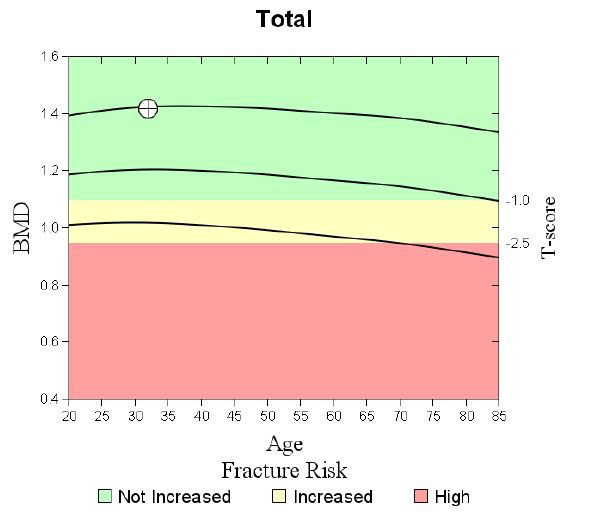
Tracking My Body Fat Percentage when Cutting
I will use either the Accu-Measure 3000 or visually looking at changes in the mirror. During a cut, I will weigh myself daily and then take the average of those individual weights at the end of the week.
Your weight will fluctuate from day to day due to transient factors that do not impact long term body fat percentage decreases. Factors such as a meal high in salt from the night before, hormonal changes that cause water retention (menstrual cycles), high creatine intakes, and so on.
It is the main reason why taking an average of seven individual weights over a week will be more accurate then relying on a single bathroom scale figure.
If your average weight is dropping, then you’re losing weight. If the average weight is increasing, your gaining weight.
To wrap it up…
I suggest weighing yourself first thing in the morning, before training, before consuming water or food, and after your first bathroom visit. Weigh yourself daily then take an average of those weights and divide it by the number of days. Watch the average drop from week to week and make adjustments to your meal plan or calorie intake as necessary.
How I Reduced My Body Fat Percentage
For 99% of diet books and articles on the internet, this is where the product sales pitch gets inserted. Fat burners, work-out gimmicks, false promises, work-out PDF guides, 30-day trials, etc, to extract the last few dollars out of you.
The way I was able to manipulate my body fat percentage through “bulking” and “cutting” is an exact science that follows fundamental laws of energy balance — or eating fewer (or more) calories than what your body needs everyday to either reduce or increase body fat percentage.
In this section, I will give you a five step process I followed that will help you achieve your goals of reducing your body fat percentage.
Step 1. Reduce Daily Calorie Intake By 20% for 4–6 Weeks
The reason why I was carrying excess fat is because I consistently ate more calories than I was burning. When I applied the opposite strategy of eating fewer calories than I was burning, I saw a consistent drop in my body fat percentage.
When you are in a calorie deficit where you are consuming less calories than what your body needs, your body is forced to burn fat stores to make up the short-fall in energy intake. The larger the calorie deficit the faster the fat loss but the greater the feeling of hunger you’ll feel.
This is exactly the reason why starvation dieting never works.
To make weight loss enjoyable and sustainable, setting your calorie deficit to around 20% (eating 20% less calories every day) is how I managed to lose all of the fat without feeling too hungry or having intense cravings.
I’ve created a simple online calculator that I used to figure out how many calories I needed to eat everyday to maintain a calorie deficit. This macronutrient calculator will help you get started in your fat loss journey.
Alternatively, to quickly determine how many calories per day you should eat to lose fat quickly. Multiply your current weight by 11.
For example, if my goal is to lose 1–2 pounds of fat per week, I would need to eat around 2,200 calories (200 lbs x 11) per day, at least 5–6 days per week. I would aim to eat within 100 calories of that target using either MyNetDiary or a free meal planner to keep me on track. After 4–6 weeks of consistently tracking and monitoring, I know I would lose a considerable amount of body fat.
Step 2. Heavy Compound Lifting 3–5 Times Per Week
Once you have restricted your calories in Step 1, you must undertake heavy compound weight training to minimise muscle loss.
The biggest mistake I made in the early days was I only focused on restricting my calories without lifting weights, and I became a skinny-fat (no fat and no muscle!).
If your ambition is to lose fat but not lose the muscle on your body, focusing on compound exercises which target multiple muscle groups simultaneously, will ensure you do not become a skinny-fat!
When I was a complete beginner to weight training, I followed the push-pull-legs method of weight training and I’ve seen incredible results over the years. I highly suggest incorporating a push-pull-legs program if you are just getting started.
Step 3. Keep Protein Intake High
One of the biggest mistakes I made when trying to reduce my body fat percentage was not increasing my daily protein intake.
When I first learned that I needed over 1 gram per pound of bodyweight per day, I immediately felt it was far too much protein! During my first cut, I was only consuming an average of 75 grams of protein per day, while weight lifting, and I was upset that I not only lost body fat but also muscle! (aka. skinny-fat!)
When optimising body composition by reducing your body fat percentage without losing any muscle, protein is by far the most important macronutrient to consume.
There is plenty of research which supports the consumption of protein in your body composition goals. Here are some of the following benefits of increased protein intake:
- It helps to gain muscle faster
- You’ll feel more satiated while in a calorie deficit (less likely to binge)
- It helps maintain muscle (I wish I knew this one earlier!)
When I finally learned this and set my protein intake at around (220 lbs x 1 gram) = 220 grams per day, with a absolute minimum per day of around 150 grams, I was able to preserve all of the muscle I built when I reached 8.30% body fat.
If I had made the same mistake of only consuming 75 grams of protein per day, I would have reduced both my body fat and muscle, becoming a skinny-fat all over again! Don’t make the same mistake I did.
If you are very overweight (above 25% body fat for guys and 30% and above for women), set your protein intake at 40% of your calorie target.
If you are wondering how you are supposed to get all of that protein each day! Personally, I like to get 60% of my protein target with whole food and 40% with supplemental protein (such as whey protein).
I will typically have a 40 gram whey protein shake within 30 minutes of my weight lifting session and another 40 gram whey protein shake post-workout. Throughout the day, I will have one more whey protein shake of around 40 grams before dinner. For lunch and dinner, I ensure I get at least 150–200 grams of beef or chicken (around 30–40 grams of protein) with vegetables.
This is the strategy I’ve used for many years to ensure I get all of the protein I need on a day to day basis.
Step 4. Incorporate High Intensity Interval Training (HIIT)
High Intensity Interval Training (HIIT) is a form of cardio where you combine short bursts of intense exercise followed by periods of rest or low intensity cardio.
Incorporating HIIT into your training program to reduce your body fat percentage is not mandatory, but research indicates that you’ll lose more fat in a shorter period of time than traditional steady-state cardio.
Specifically, research found that you are able to burn as much fat doing 60-minutes of steady-state treadmill exercise compared to 25-minutes of HIIT.
I like to warm-up for 5 minutes, undertake HIIT for 20-minutes, then do a 5-minute cool-down. You can either choose boxing, treadmill, or skip rope. The choice is yours.
Step 5. Taking Supplements to Reduce Body Fat Percentage
The short answer is… you don’t need to take supplements, provided you have correctly structured your diet and training.
If I were a sponsored athlete, it would be the perfect place in the article to offer discount coupons and a BS rant on the product I was trying to sell.
Most supplement companies produce supplements filled with junk ingredients, proprietary blends, and alluring packaging, to convince you to spend your hard-earned cash.
So while there are no workout supplements that can directly help you reduce your body fat percentage, there are two supplements that I’ve consistently taken over the years to assist in meeting my training goals.
- Protein powder
- Creatine monohydrate
Personally, I am a busy guy that struggles to get all of my protein needs from whole food (i.e., chicken, beef, seafood).
Taking whey protein powder to meet my daily intake requirement has been essential in my workout recovery.
Secondly, creatine monohydrate is the most researched supplement in the sports supplement world. It’s found naturally in the body and in food like red meat.
Hundreds of studies on supplementing with creatine have determined that it will help you build muscle and strength, improve anaerobic endurance, and reduce muscle soreness and damage.
Therefore, if you have good kidney function then I highly recommend that you supplement with creatine monohydrate. Ignore all other variants of creatine as almost all scientific studies have been conducted on creatine monohydrate.
It’s safe, cheap and very effective.
What Body Fat Percentage Will I See Abs?
For men, you’ll start seeing the top row of your abs at around 12–15% body fat and for women, around 20–22%.
For guys, as you approach 10% body fat, you’ll start to see more and more separation between your abs with the last bit of fat slowly being stripped off the lower abs. You’ll need to get to 7–10% body fat to see your serratus muscles.
For women, the vertical lines appear somewhere between 15–20%.
Body Fat Percentage Final Thoughts
In my experience, it is absolutely worth the effort to reduce your body fat percentage into a body fat percentage range for both health and vanity.
Most men are happy with a body fat percentage between 9 to 15% body fat and women between 15–20% body fat. It is both achievable and sustainable all year around, without the need to track and monitor calories or macronutrient intake.
Personally, I enjoy a body fat percentage around 12–14% and I’ve not followed a meal plan for almost 3 years! The strategies outlined in this article are designed to guide you into a body fat percentage range where you can eventually return to a less vigorous life of tracking calories and logging weight lifting workouts.
Any body fat percentage below 10% for guys and 15% for girls becomes disproportionately more difficult to maintain. Therefore you’ll only see shredded athletes below these numbers if they are about to step on stage or in front of a camera for a front cover shoot.
Next time you see a bunch of fitness models with their polished abs and toothy smiles on a magazine cover, let your self-esteem be put at ease as their physiques remain photogenic for less than a day.
It is important to point out that most people will need to bulk and cut twice in order to reach a body composition they are truly proud of and happy to maintain. Each bulk and cut should last between 4 to 6 weeks.
If you can commit 4 to 6 weeks to the following;
- Calculate your daily calorie deficit (or bodyweight x 11)
- Consume 1 gram per LB of bodyweight per day of protein
- Implement the push-pull-legs beginner workout routine
- Incorporate a maximum of 60-minutes of HIIT per week
- Track your meals using a flexible meal plan or MyNetDiary
- Use the Accu-measure 3000 or DEXA to track body fat percentage
- Be consistent (and patient!)…
Your body will completely transform before your eyes. Let me know how it goes! 🙂
Related: Still stuck in the skinny-fat trap? You train hard, eat “healthy,” but still look soft instead of strong—sound familiar? Stop spinning your wheels. I’ll show you exactly how to build muscle, drop fat, and finally get the lean, athletic physique you’ve been chasing 👉 Click here to apply for online coaching today!


